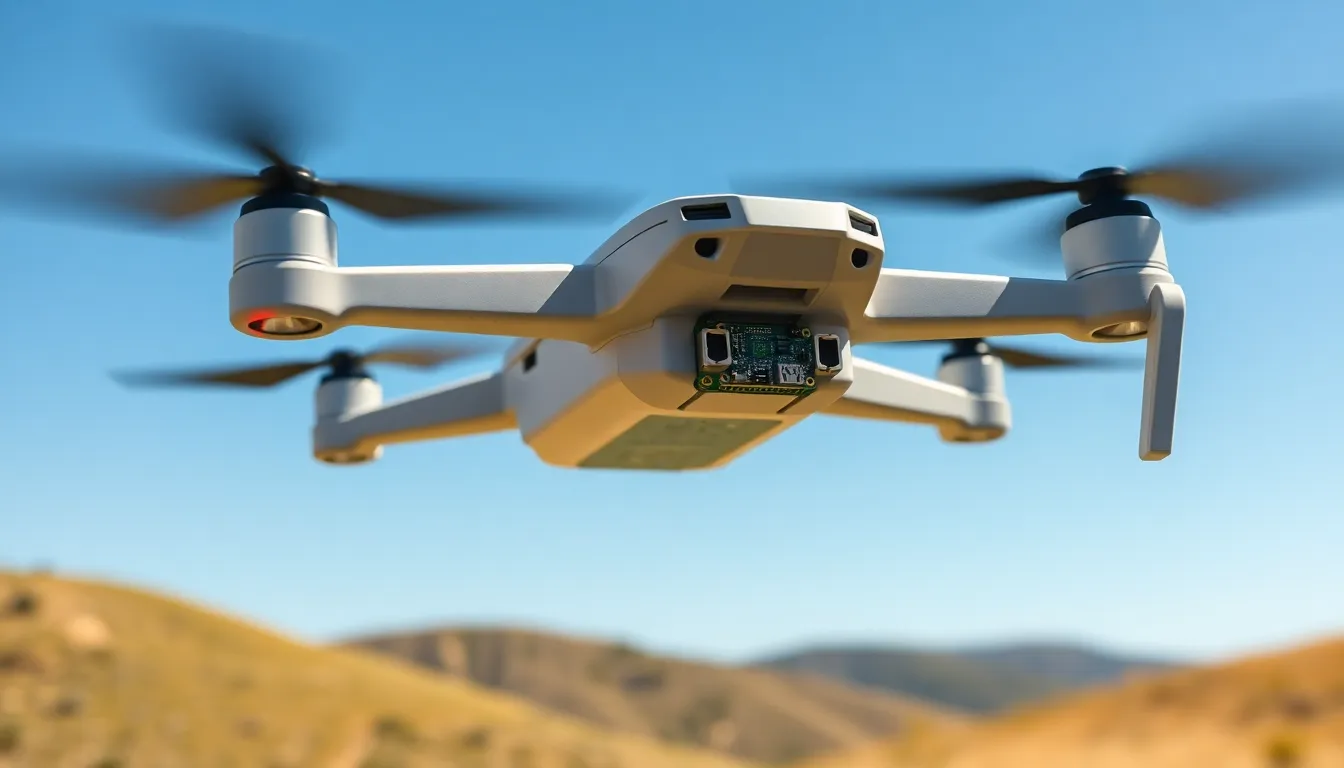Let’s face it: if you’re not riding the wave of technology, you might as well be stuck in the stone age, wondering what happened to your trusty flip phone. Enter the world of Raspberry Pi Zero thermal drones. They are the latest marvels of tech, combining a pint-sized computer with high-flying capabilities. If you think building such a drone is rocket science, think again. With a sprinkle of ambition, a dash of creativity, and a little guidance from this article, you’ll be soaring through the skies in no time, all while impressing your friends (and your local tech club). Let’s jump into the nitty-gritty of how to turn a simple Raspberry Pi Zero into a thermal imaging powerhouse.
Table of Contents
ToggleUnderstanding the Raspberry Pi Zero

Overview of Raspberry Pi Zero Features
The Raspberry Pi Zero is a marvel of modern engineering. Small but mighty, it packs a variety of features into a compact form. With a quad-core processor, it runs at 1 GHz, making it surprisingly powerful for its size. It includes 512 MB of RAM, USB ports, and an HDMI output, allowing flexibility for various applications. It’s not just about speed: the energy efficiency of the Raspberry Pi Zero makes it perfect for battery-operated projects like drones.
How Raspberry Pi Zero Differentiates from Other Models
So, how does the Raspberry Pi Zero stack up against its bigger siblings? It’s all about size and cost. While the standard Raspberry Pi is excellent for general computing, the Zero shines when weight and cost are critical. Weighing just 9 grams, it’s a featherweight, giving drones the lift they need without sacrificing functionality. Also, its budget-friendly price means you can also experiment without very costly.
Applications in Drone Technology
Advantages of Using Raspberry Pi Zero in Drones
Utilizing the Raspberry Pi Zero in drone technology offers a plethora of benefits. For starters, its compact size allows for minimal weight, ensuring better flight times. Drones equipped with Raspberry Pi Zero can access a host of sensors and cameras, making them versatile. Whether it’s for hobbyists capturing stunning landscapes or professionals conducting precise surveys, this model can adapt to various needs. Also, the extensive community support means countless tutorials and projects are readily available, making it easier for anyone to start.
Thermal Imaging Technology Explained
Integrating Thermal Cameras with Raspberry Pi Zero
When it comes to thermal imaging, pairing it with the Raspberry Pi Zero is a game-changer. The integration of thermal cameras, like the FLIR Lepton, allows real-time heat detection. This is essential for applications ranging from building inspections to wildlife monitoring. The process generally involves connecting the camera to the Raspberry Pi via a specialized interface, followed by configuring software to process and display the thermal data.
Key Considerations for Thermal Drone Setup
Before embarking on your thermal drone journey, there are critical considerations to keep in mind. The weight of the camera and added components must be calculated to ensure optimal flight stability. Also, effective heat dissipation is crucial: the Raspberry Pi may get warm during operation, demanding adequate cooling mechanisms to prevent overheating.
Building a Raspberry Pi Zero Thermal Drone
Materials Needed for Construction
To construct a Raspberry Pi Zero thermal drone, you will need a few essential materials. Firstly, of course, you’ll require the Raspberry Pi Zero itself. Alongside that, gather a compatible thermal camera, drone frame, motors, propellers, and a power supply. Also, having a good soldering kit and electronic components, such as resistors and connectors, will aid in the build.
Step-by-Step Assembly Process
Building your drone might seem daunting at first, but following a step-by-step approach simplifies it. Start by assembling the frame and attaching the motors and propellers. Ensure that everything is securely fastened. Next, integrate the Raspberry Pi Zero and connect the thermal camera according to the manufacturer’s instructions. Use a soldering technique for any wires that require secure connections. Finally, power up the drone and make any necessary adjustments to the software.
Programming the Drone for Optimal Performance
Key Software Tools and Frameworks
Programming is another exciting aspect of building your Raspberry Pi Zero thermal drone. Common tools like Python and C++ can be very helpful. Libraries such as OpenCV are invaluable for processing the thermal images captured by your drone. They allow you to analyze and manipulate the images, making your applications as sophisticated as you want.
Calibration and Testing Procedures
Before your drone takes flight, calibration is essential. Ensure that the thermal camera is correctly aligned and the Raspberry Pi settings are optimized. Conduct testing flights under various conditions to determine the drone’s responsiveness and accuracy. This stage is vital to mitigate risks and maximize performance once operational.






